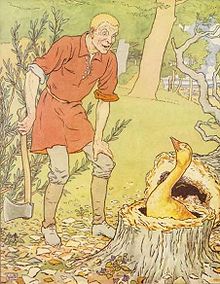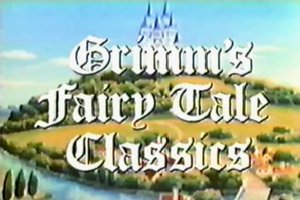
Grimm's Fairy Tale Classics, also known as Grimm Masterpiece Theater in the original version and The Grimm's Fairy Tales, is a Japanese anime anthology series by Nippon Animation based on the Grimms' Fairy Tales.

The Pentamerone, subtitled Lo cunto de li cunti, is a seventeenth-century Neapolitan fairy tale collection by Italian poet and courtier Giambattista Basile.
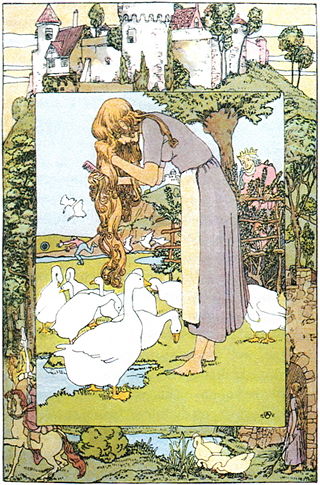
"The Goose Girl" is a German fairy tale collected by the Brothers Grimm and first published in Grimm's Fairy Tales in 1815. It is of Aarne-Thompson type 533.

"The Twelve Dancing Princesses" is a German fairy tale collected by the Brothers Grimm and published in Grimm's Fairy Tales in 1815. It is of Aarne-Thompson type 306.

Grimms' Fairy Tales, originally known as the Children's and Household Tales, is a German collection of fairy tales by the Grimm brothers or "Brothers Grimm", Jacob and Wilhelm, first published on 20 December 1812. Vol. 1 of the first edition contained 86 stories, which were followed by 70 more tales, numbered consecutively, in the 1st edition, Vol. 2, in 1815. By the seventh edition in 1857, the corpus of tales had expanded to 200 tales and 10 "Children's Legends". It is listed by UNESCO in its Memory of the World Registry.

The Golden Bird is a fairy tale collected by the Brothers Grimm about the pursuit of a golden bird by a gardener's three sons.
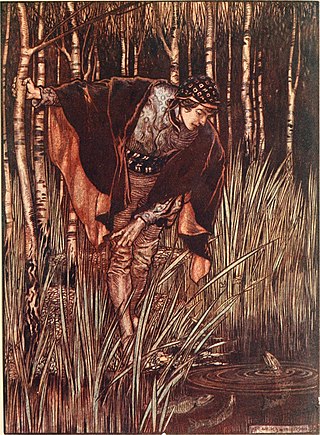
"The White Snake" is a German fairy tale collected by the Brothers Grimm and published in Grimm's Fairy Tales. It is of Aarne–Thompson type 673, and includes an episode of type 554.
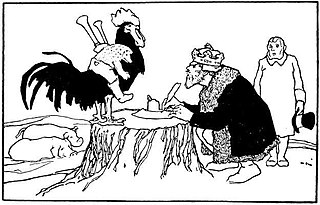
"Hans My Hedgehog" is a German fairy tale collected by the Brothers Grimm. The tale was translated as Jack My Hedgehog by Andrew Lang and published in The Green Fairy Book. It is of Aarne-Thompson type 441.

"The Singing, Springing Lark", "The Singing, Soaring Lark", "The Lady and the Lion" or "Lily and the Lion" is a German fairy tale collected by the Brothers Grimm, appearing as tale no. 88.
How Ian Dìreach got the Blue Falcon is a Scottish fairy tale, collected by John Francis Campbell in Popular Tales of the West Highlands. He recorded it from a quarryman in Knockderry, Roseneath, named Angus Campbell.

The youngest son is a stock character in fairy tales, where he features as the hero. He is usually the third son, but sometimes there are more brothers, and sometimes he has only one; usually, they have no sisters.
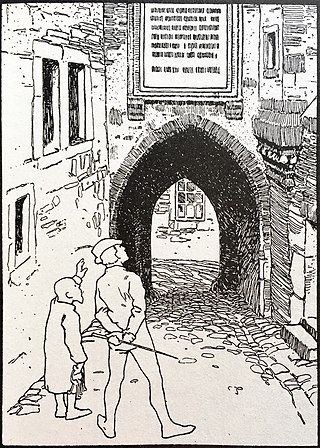
"The Queen Bee" is a German fairy tale collected by the Brothers Grimm in Grimm's Fairy Tales. It is of Aarne-Thompson type 554.
"The Goose-Girl at the Well" is a German fairy tale collected by the Brothers Grimm. It is Aarne-Thompson type 923.
"The Three Little Birds" is a German fairy tale collected by the Brothers Grimm, tale number 96. The story is originally written in Low German. It is Aarne-Thompson type 707, the dancing water, the singing apple, and the speaking bird. The story resembles Ancilotto, King of Provino, by Giovanni Francesco Straparola, and The Sisters Envious of Their Cadette, the story of the 756th night of the Arabian Nights.
"The Riddle" is a German fairy tale collected by the Brothers Grimm in Grimm's Fairy Tales in 1819. It is of Aarne-Thompson type 851.
"The Griffin" is a German fairy tale collected by the Brothers Grimm in Grimm's Fairy Tales.

"The King of the Golden Mountain" is a German fairy tale collected by the Brothers Grimm in Grimm's Fairy Tales.

"The Gnome" is a German fairy tale collected by the Brothers Grimm in Grimm's Fairy Tales, tale number 91.

"The Three Feathers" is a story by the Brothers Grimm, in their Kinder- und Hausmärchen. It is KHM nr. 63. It is classified as Aarne–Thompson–Uther ATU 402, "The Animal Bride". It appeared in the first edition in 1812, and was slightly reworked for the second edition in 1819. A second variant of the tale also collected by the Brothers Grimm is "The Poor Miller's Boy and the Cat", listed as KHM 106.
The Green Man of Knowledge is a Scottish folktale collected in 1954 and published in 1958, in the academic journal Scottish Studies. It is classified in the international Aarne-Thompson-Uther Index as tale type ATU 313, "Girl Helps the Hero Flee" or "The Magic Flight".
Babbitt, E.C. (Ed.). (1922). More Jataka Tales. New York, NY: D. Appleton-Century Company.
